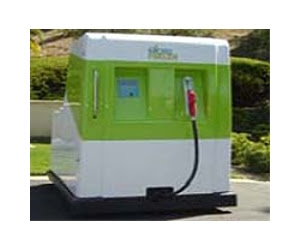La Bagasse
La bagasse est le résidu fibreux de la canne à sucre qu'on a passée par le moulin pour en extraire le suc. Elle est composée principalement par la cellulose de la plante.
Ce terme désigne également les tiges de la plante qui fournit l'indigo, quand on les retire de la cuve après la fermentation.
Mode de production
 |
| Production de sucre de canne à Madère |
L'industrie de la canne produit en grandes quantités la bagasse, résidu de l'extraction du jus de pipe pour la production de rhum ou de sucre. On estime que la production mondiale de bagasse est d'environ 250 millions de tonnes par an.
Utilisation de la bagasse
Production d'énergie
On considère qu'une tonne de canne produit environ 300 kg de bagasse qui a une valeur calorifique de 7 900 kJ/kg ce qui est certes inférieur à celle du bois sec (16 000 kJ/kg) dont le rythme de production est cependant plus lent.
La bagasse est une bioénergie utilisée dans les usines de production de rhum ou de sucre. La performance des installations permet à certaines usines de fonctionner en autonomie énergétique.
En comparaison avec les énergies fossiles brûlées dans les usines de production d'énergie, la bagasse présente plusieurs intérêts : elle est dépourvue de dioxyde de soufre, elle résulte d'une autre production, et sa combustion ne dégage que le CO2 fixé par la plante lors de sa croissance, quantité très réduite car le CO2 consommé par le métabolisme autotrophe de la canne à sucre est pour la majeure partie stocké dans le sucre.
Une exploitation rationnelle des 250 millions de tonnes de bagasse produites annuellement dans le monde pourrait économiser 50 millions de tonnes de pétrole soit environ 1,2 % de la consommation annuelle en 2003.
Cette utilisation concerne environ 60 % de la bagasse produite d'après la FAO1.
Alimentation du bétail
La bagasse peut être également utilisée pour l'alimentation du bétail. Cette utilisation ne semble pas intéressante dans le cas de jeunes bovins mais s'avère rentable pour les animaux de plus de deux ans1.
Construction et ameublement
La bagasse permet de fabriquer un matériau de construction appelé bagapan.
Emballage alimentaire
La bagasse est utilisée depuis quelques années pour les emballages alimentaires, assiettes, bols, gobelets, etc. En effet, cette utilisation de la bagasse est une bonne alternative au plastique et au polystyrène, car la bagasse n'est pas dangereuse pour la santé, et elle est biodégradable en 45 jours2. L'avantage également de la bagasse est sa résistance à des températures extrêmes, et elle peut donc être congelée ou servir de contenant pour bouillir les aliments. Ne contenant pas de métaux, un produit en bagasse est utilisable au four à micro-ondes. Les emballages alimentaires en bagasse sont compostables. L'utilisation d'un tel produit aurait un impact neutre sur la santé voire positif sur l'environnement3.













